1. 编写HTTP模块
1.1 目标
- 编写一个简单的显示hello world 信息的HTTP 模块
1.2 几个重要组成部分
1.2.1 ngx_command_t 数组
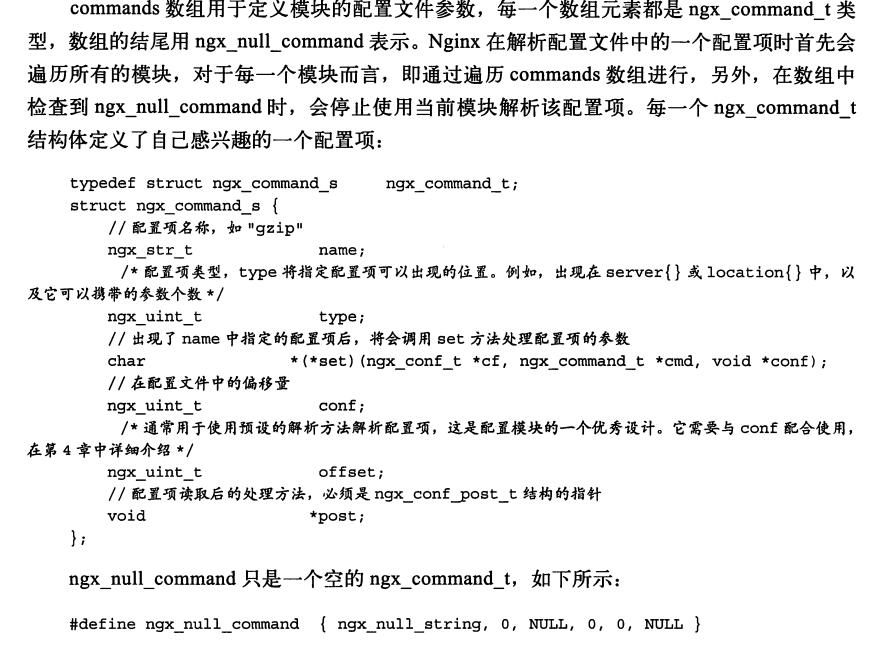
也就是说, 对于我们在nginx.conf 中编写的配置项 mytest 来说, nginx 首先会遍历所有的模块(modules),而对于每个模块, 会遍历他所对应的ngx_command_t 数组, 试图找到关于我们的配置项mytest 的解析方式。
我们的这部分代码如下:
static ngx_command_t ngx_http_mytest_commands[] =
{
{
ngx_string("mytest"),
NGX_HTTP_MAIN_CONF | NGX_HTTP_SRV_CONF | NGX_HTTP_LOC_CONF | NGX_HTTP_LMT_CONF | NGX_CONF_NOARGS,
ngx_http_mytest,
NGX_HTTP_LOC_CONF_OFFSET,
0,
NULL
},
ngx_null_command
};1.2.2 command中用于处理配置项参数的set 方法
static char *
ngx_http_mytest(ngx_conf_t *cf, ngx_command_t *cmd, void *conf)
{
ngx_http_core_loc_conf_t *clcf;
//首先找到mytest配置项所属的配置块,clcf貌似是location块内的数据
//结构,其实不然,它可以是main、srv或者loc级别配置项,也就是说在每个
//http{}和server{}内也都有一个ngx_http_core_loc_conf_t结构体
clcf = ngx_http_conf_get_module_loc_conf(cf, ngx_http_core_module);
//http框架在处理用户请求进行到NGX_HTTP_CONTENT_PHASE阶段时,如果
//请求的主机域名、URI与mytest配置项所在的配置块相匹配,就将调用我们
//实现的ngx_http_mytest_handler方法处理这个请求
clcf->handler = ngx_http_mytest_handler;
return NGX_CONF_OK;
}关于ngx_http_conf_get_module_loc_conf 的定义可以参考:
http://lxr.nginx.org/source/src/http/ngx_http_config.h#0065
本质: 就是设置ngx_http_mytest_handler, 匹配项被选中的时候, 应该如何解析。
1.2.3 定义ngx_http_module_t 接口
这部分的代码, 是用于http框架的, 相当于http框架的回掉函数, 由于这里并不需要框架做任何操作。
static ngx_http_module_t ngx_http_mytest_module_ctx =
{
NULL, /* preconfiguration */
NULL, /* postconfiguration */
NULL, /* create main configuration */
NULL, /* init main configuration */
NULL, /* create server configuration */
NULL, /* merge server configuration */
NULL, /* create location configuration */
NULL /* merge location configuration */
};1.2.4 定义mytest模块
书本上对ngx_module_t 模块的解析:
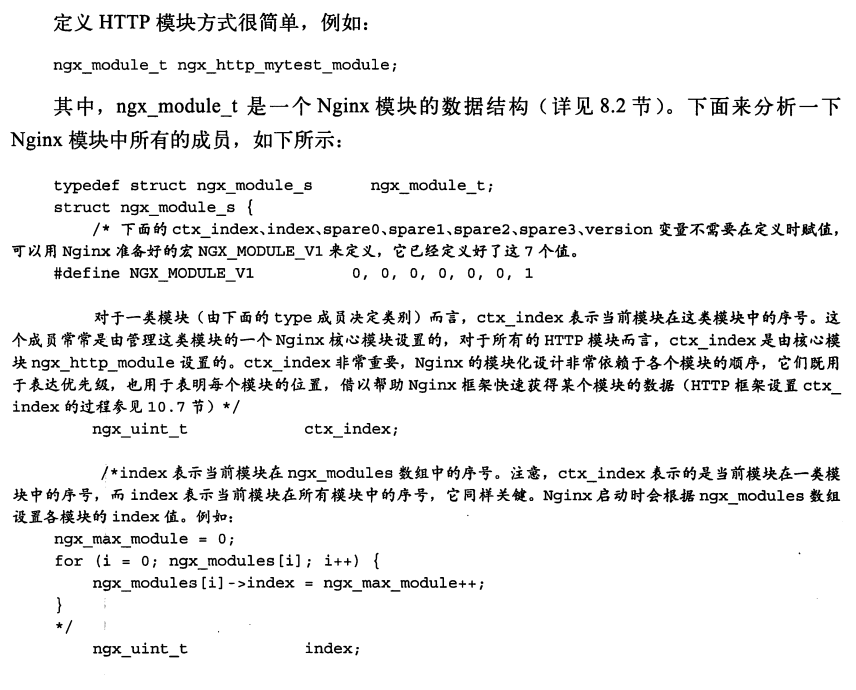
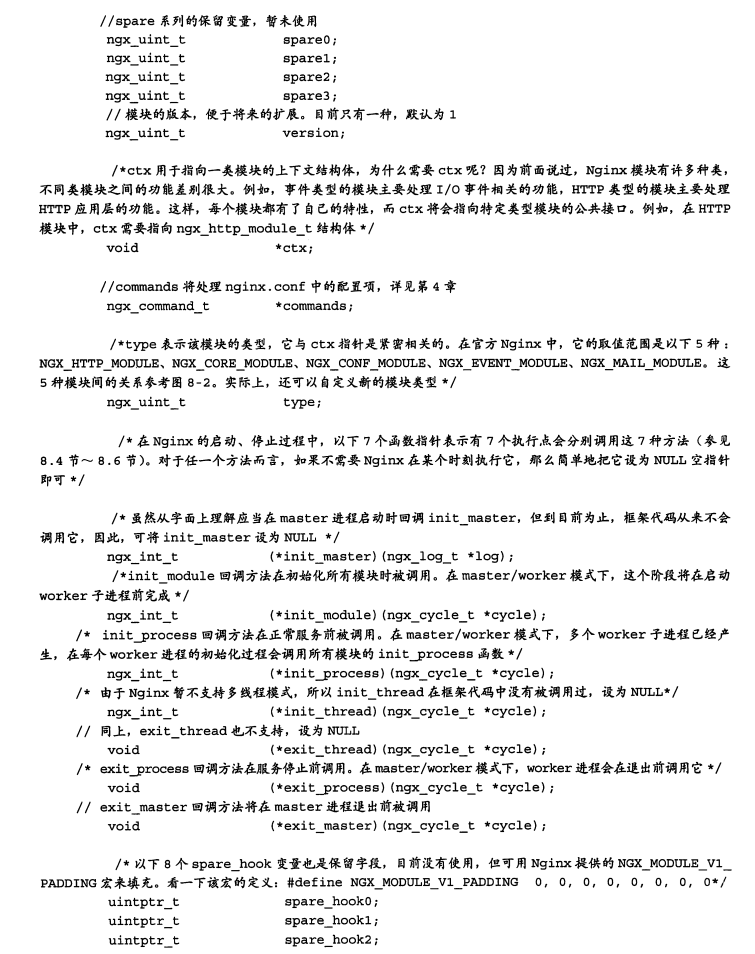
而实际上, 只需要简单的设置3个项目: ctx(指向模块的上下文), commands, type(模块类型)
ngx_module_t ngx_http_mytest_module =
{
NGX_MODULE_V1,
&ngx_http_mytest_module_ctx, /* module context */
ngx_http_mytest_commands, /* module directives */
NGX_HTTP_MODULE, /* module type */
NULL, /* init master */
NULL, /* init module */
NULL, /* init process */
NULL, /* init thread */
NULL, /* exit thread */
NULL, /* exit process */
NULL, /* exit master */
NGX_MODULE_V1_PADDING
};这样, mytest 模块在编译的时候, 就可以被加入到ngx_modules的全局数组中了。
1.2.5 处理用户请求的hello world handler
我们这里需要定义配置项被匹配之后的处理方法, ngx_http_mytest_handler:
static ngx_int_t ngx_http_mytest_handler(ngx_http_request_t *r)
{
//必须是GET或者HEAD方法,否则返回405 Not Allowed
if (!(r->method & (NGX_HTTP_GET | NGX_HTTP_HEAD)))
{
return NGX_HTTP_NOT_ALLOWED;
}
//丢弃请求中的包体
ngx_int_t rc = ngx_http_discard_request_body(r);
if (rc != NGX_OK)
{
return rc;
}
//设置返回的Content-Type。注意,ngx_str_t有一个很方便的初始化宏
//ngx_string,它可以把ngx_str_t的data和len成员都设置好
ngx_str_t type = ngx_string("text/plain");
//返回的包体内容
ngx_str_t response = ngx_string("Hello World!");
//设置返回状态码
r->headers_out.status = NGX_HTTP_OK;
//响应包是有包体内容的,所以需要设置Content-Length长度
r->headers_out.content_length_n = response.len;
//设置Content-Type
r->headers_out.content_type = type;
//发送http头部
rc = ngx_http_send_header(r);
if (rc == NGX_ERROR || rc > NGX_OK || r->header_only)
{
return rc;
}
//构造ngx_buf_t结构准备发送包体
ngx_buf_t *b;
b = ngx_create_temp_buf(r->pool, response.len);
if (b == NULL)
{
return NGX_HTTP_INTERNAL_SERVER_ERROR;
}
//将Hello World拷贝到ngx_buf_t指向的内存中
ngx_memcpy(b->pos, response.data, response.len);
//注意,一定要设置好last指针
b->last = b->pos + response.len;
//声明这是最后一块缓冲区
b->last_buf = 1;
//构造发送时的ngx_chain_t结构体
ngx_chain_t out;
//赋值ngx_buf_t
out.buf = b;
//设置next为NULL
out.next = NULL;
//最后一步发送包体,http框架会调用ngx_http_finalize_request方法
//结束请求
return ngx_http_output_filter(r, &out);
}自此, 一个简单的nginx 的hello world 模块编写完毕
2. 将自己的HTTP模块编译进Nginx
- 在编译的时候加入参数, –add-module=PATH
2.1 config 文件
ngx_addon_name=ngx_http_mytest_module
HTTP_MODULES="$HTTP_MODULES ngx_http_mytest_module"
NGX_ADDON_SRCS="$NGX_ADDON_SRCS $ngx_addon_dir/ngx_http_mytest_module.c"3. 配置nginx.conf
在相应的server 中添加下面的指令
location \hello{
mytest;
}4. 运行效果
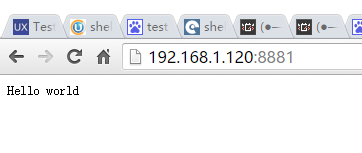










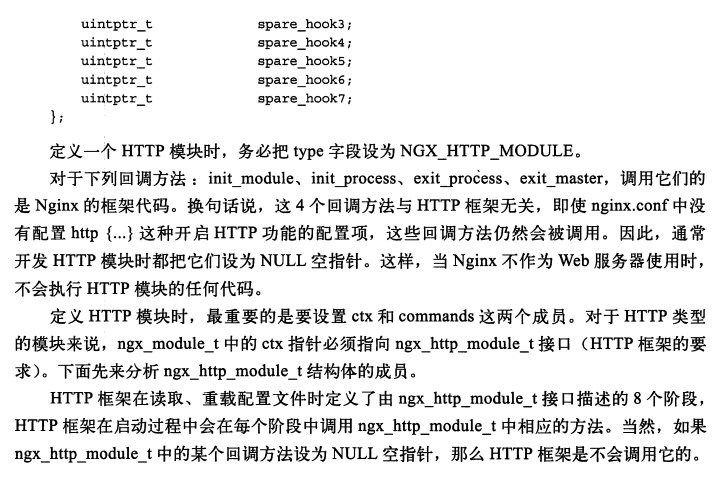
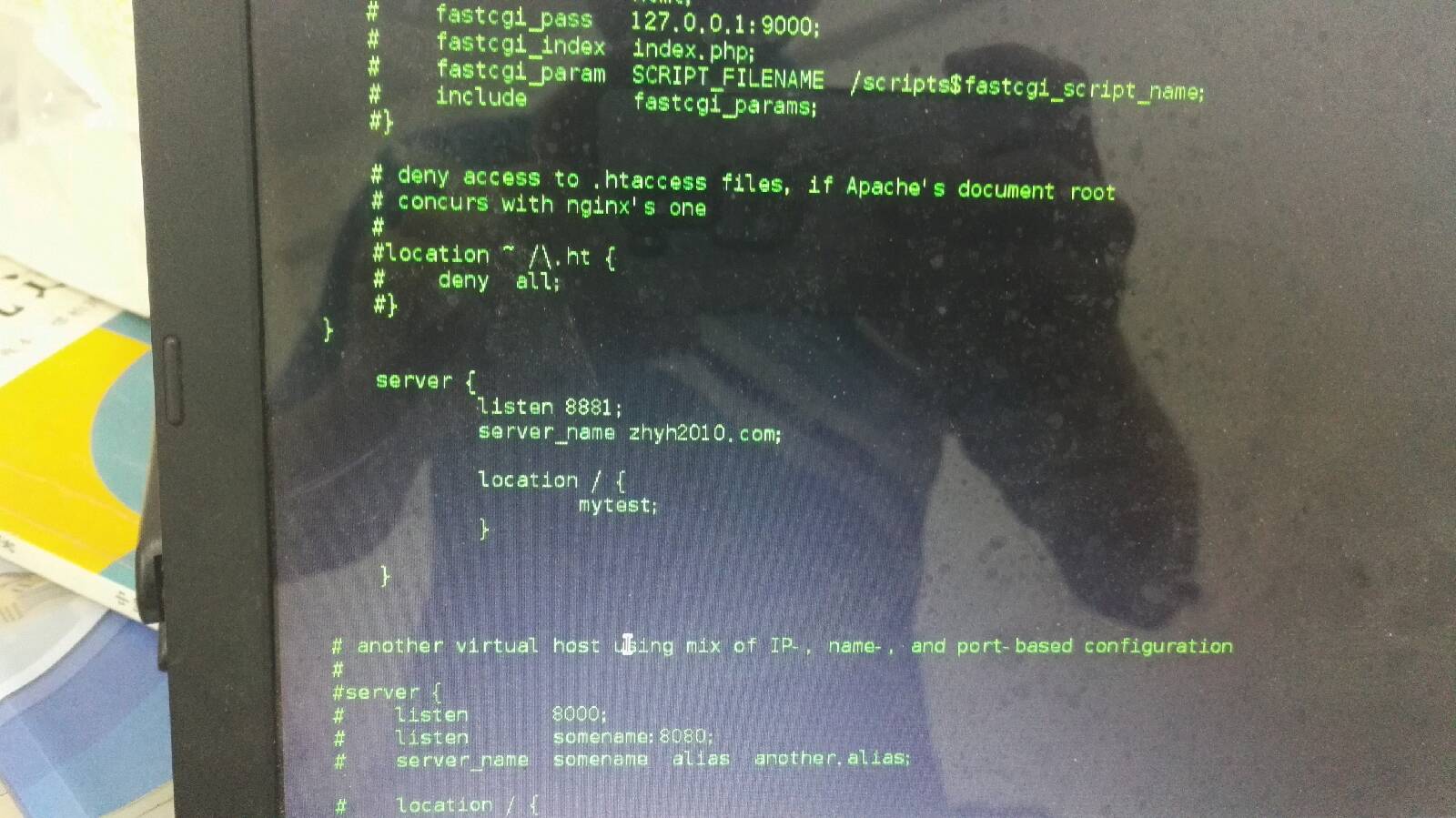















 1105
1105











 被折叠的 条评论
为什么被折叠?
被折叠的 条评论
为什么被折叠?








